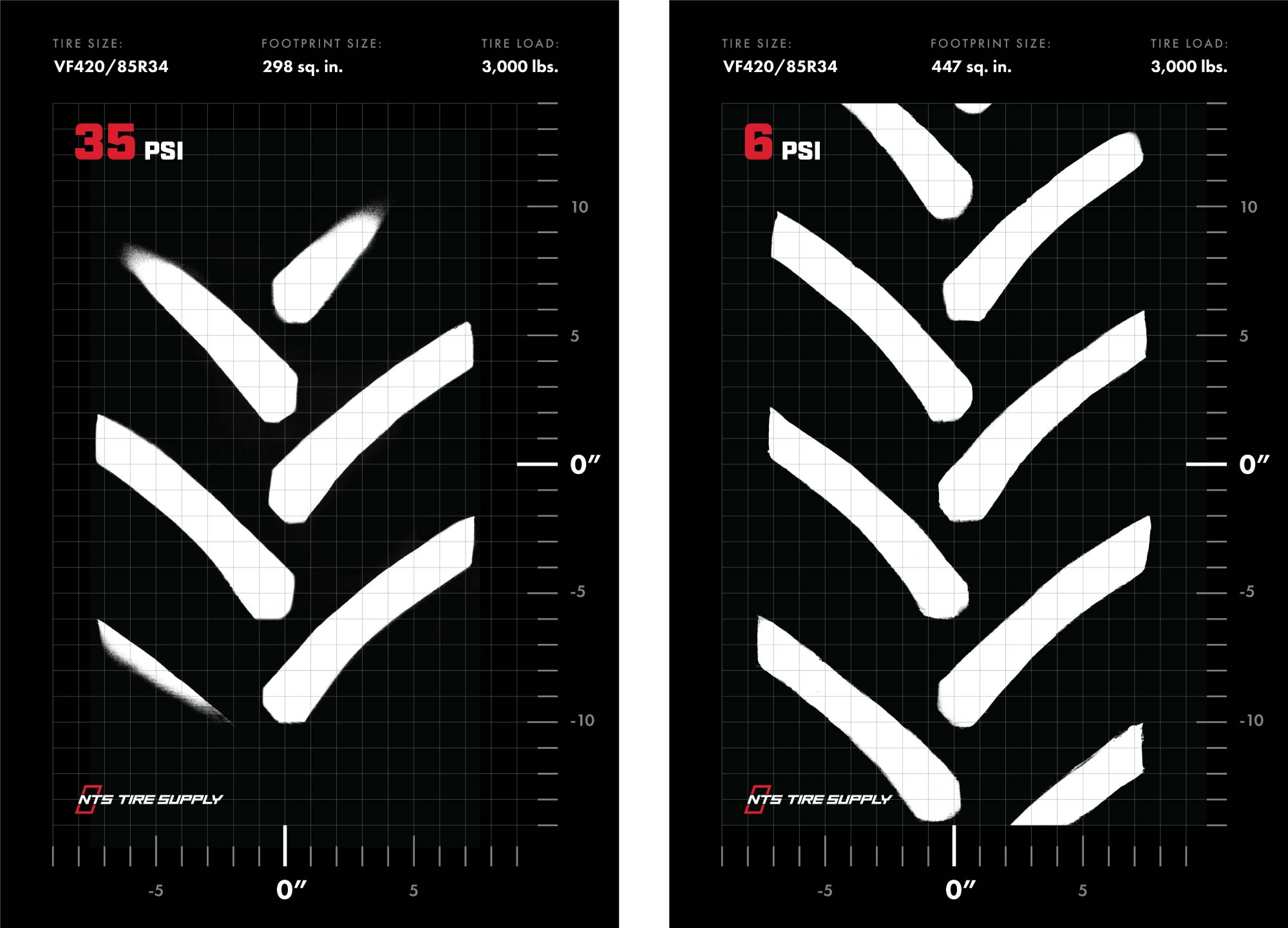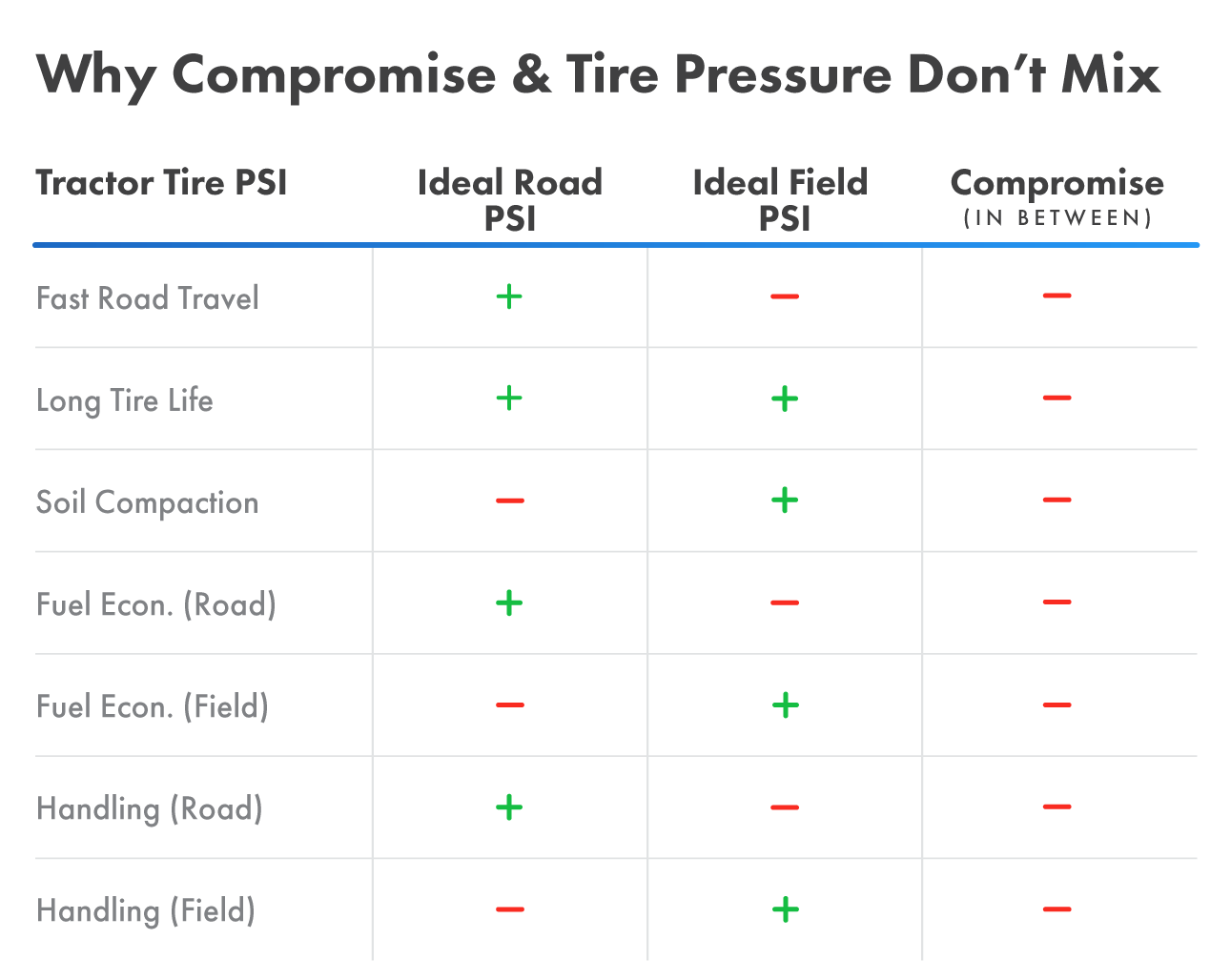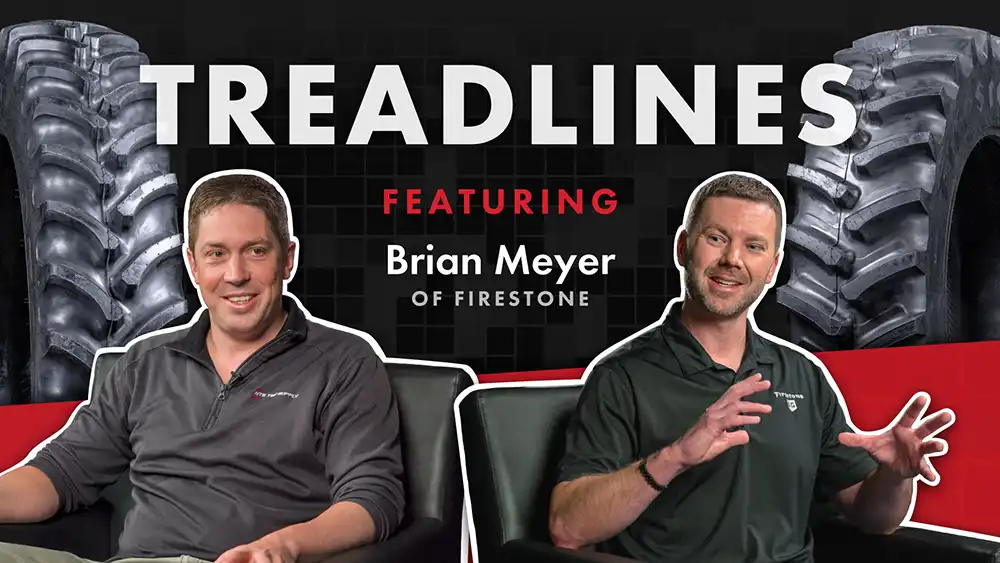Pneumatic tires. Mass production. Diesel engines. FM radios. GPS. Tractors have progressed from crude to complicated over the past 100 years, and the transformation isn’t over. There’s a way that you can upgrade the tractor (or tractors) you already have—right now—to discover additional performance that you maybe hadn’t thought possible.

Traction, Flotation & Fuel Economy Depend on Your Tires
Once upon a time, tires that were black, round, and had enough air in them to make them look “not too squishy” were good enough. Not today. With today’s heavier, more powerful equipment, it’s more important than ever to make sure your tires are driving your farm forward instead of bogging it down. With quality radial tires, set to the correct air pressure, you can maximize traction without sinking too deep into the soil. Higher fuel economy, faster field work, and better handling are more benefits of a tractor with the correct tire setup.
Read more: 10 Top Tires that Maximize Your Traction
One ‘Fixed’ PSI is a Big Problem with Your Tractor’s Tires
Here’s the problem: There is no one correct tire setup for your tractor. Why? Because your tractor lives in two worlds—the road and the field. We’re not talking about chore tractors here. We’re talking about your high-horse planting, tillage, lugging workhorse. For fieldwork, most experts recommend staying below 15 psi if at all possible. Essentially, the lower the tire pressure you run the better because you want your tires to be soft and flexible to create a long footprint. Run down the road with tires at your optimized field psi, however, and you’ll slash your tires’ life, burn extra fuel, and deal with mushy handling. On the road, you want your tires as firm as possible. Pick a pressure somewhere in the middle, and your tires aren’t optimized for anything.
.jpeg)
The Solution: A PTG Central Tire Inflation System
Running at one tire pressure for both the field and the road is costing you time and money. When you set tire pressure for the worst case scenario—running down the road with a heavy load—you’re leaving a lot of money on the table. According to Michelin, the owner of PTG Tire Inflation Systems, a central tire inflation system can deliver:

When you equip your tractor with a central tire inflation system, you’ll discover additional performance because you’re able to set the ideal air pressure in your tires for every situation.
Low Pressure in the Field for Maximum Grip, Minimum Compaction & More Profit
The field is where a central tire inflation system really counts, because it’s where you make your money. When you run your tractor’s tires at their minimum safe psi (for the load and speed, according to your tire manufacturer), you’ll maximize your grip, minimize soil compaction, and return more dollars per acre to your farm in profit.

More Grip = Less Time in the Field
A larger tire footprint provides more grip. The diagram below shows what happens when you decrease your tires’ pressure from 35 psi to 6 psi. See how much larger the footprint is? This can equal extra ground speed from decreased slip. You will finish fieldwork faster when every revolution of your tires moves you farther forward.

Less Compaction = More Yield Potential
When you spread the weight of your tractor over a larger area, you lessen its impact on the soil. Compaction destroys soil structure, makes it harder for plants to find nutrients, and can create drainage problems. When you take steps to promote healthy soil, your yields will benefit. At NTS Tire Supply, compaction is the #1 problem we help our customers to solve. It’s costing farmers a lot of money!

Learn More: Compaction from heavy wheel traffic can stunt your farm’s growth.
Grip + Flotation = Fuel Economy
Fight compaction, and you’ll also combat high fuel bills. According to PTG, for every .4 inch your tires sink into the soil, your fuel consumption increases 10%. You might as well just pull uphill all day long. When you find the perfect balance between grip and flotation with proper ballast and tire pressure, you decrease your fuel bill by not having to climb out of your own ruts all day.
Better Ride = Less Fatigue
Overinflated tires ride like a buckboard bouncing across the prairie. And fatigue from long days of punishing rides is no joke. Softer, more flexible tires (set to their minimum safe psi) act like giant shock absorbers and give you the ride and handling that you’ve always wanted in the field.
High Pressure on the Road for Efficiency & Long Tire Life
As we mentioned above, without a central tire inflation system, you’re forced to set your tire pressure for the worst case scenario—road travel. Some growers are tempted to turn down their tire pressures a bit to gain performance in the field, but this can cost your tires dearly on the road. Modern VF-rated radials, with their larger footprints, can be especially susceptible to fast wear if you run them down the road at low air pressures. With a CTIS, however, you can inflate your tires to their maximum PSI and improve your tractor’s road performance.
Less Wear = Lower Expenses
According to PTG, 90% of tire wear happens on the road. If your tire pressure is too low, the rolling motion of the tire causes the lugs to bend, slip, and rub against the road to a higher degree. Tires inflated to their max psi are firmer and don’t have this problem, which translates to longer tire life and lower replacement costs. Plus, lower rolling resistance also delivers a fuel economy boost. Think this isn’t an issue? How many miles do you run down the road with your tractor every year?
Safer Handling, Faster Travel
Today’s top-tech tires are worlds apart in handling and ride quality from old bias ply rubber. A CTIS can take them to another level: fly down the road safely without swaying in corners and cooking your tires.

3 Easy Steps to Transform Your Tractor’s Performance with CTIS
- Consult with a CTIS expert at NTS Tire Supply.
- Our professional installers mount the system on your tractor.
- Enjoy higher levels of performance and higher profitability on your farm.
Learn all the details: Who is PTG? How long do the systems last? How do they work?.
Once your system is installed, you turn it on and it just works. Control your system from an ISO monitor or PTG’s digital control box from the driver’s seat. No valves to turn and no time-consuming maintenance.
Push a button when you want to change tire pressure. The target inflation time is usually between 3 and 5 minutes. Leaving the field to run down the road? Hit the inflate button. By the time you’re down the road one mile, your tires are at their pre-set ideal road pressure. Deflating to your pre-set field pressure takes only 90 seconds. Hit the deflate button as you’re turning into the field.
What will it cost to install a PTG system on a tractor?
There are many factors that influence the price. The number of tires on each axle, the type of monitor you want, and the size of compressor you'll need to install are a few of the variables.

The real question is, "how much is it going to cost you to NOT install a system?"
According to Michelin, the owner of PTG, a central tire inflation system can deliver:

Extend Inflation System Benefits to Implements
If you equip your tractor with a central tire inflation system, you can use the tractor system’s compressor to run an inflation system on a towed implement. What are good candidates for a system? Any implement affected by big variations in load and speed. Examples include manure tankers, sprayers, and planters.
One example: Fight pinch-row compaction with a CTIS on your center-fill planter.
More Traction, Less Compaction & Better Efficiency
We understand: Central tire inflation systems aren’t common in the United States yet. But installing a system on your tractor will finally put you in complete control of your tires’ air pressure—and tractor’s performance—in every situation you’ll face. Eventually, these systems will be standard OEM equipment. But you don’t have to wait for the next burst of progress in the tractor market: You can order a custom system for your tractor today. Interested in a system quote for your machine? Call and talk with an NTS Tire Supply expert and take the next step that will drive your farm forward.

.png)
.jpg)



















